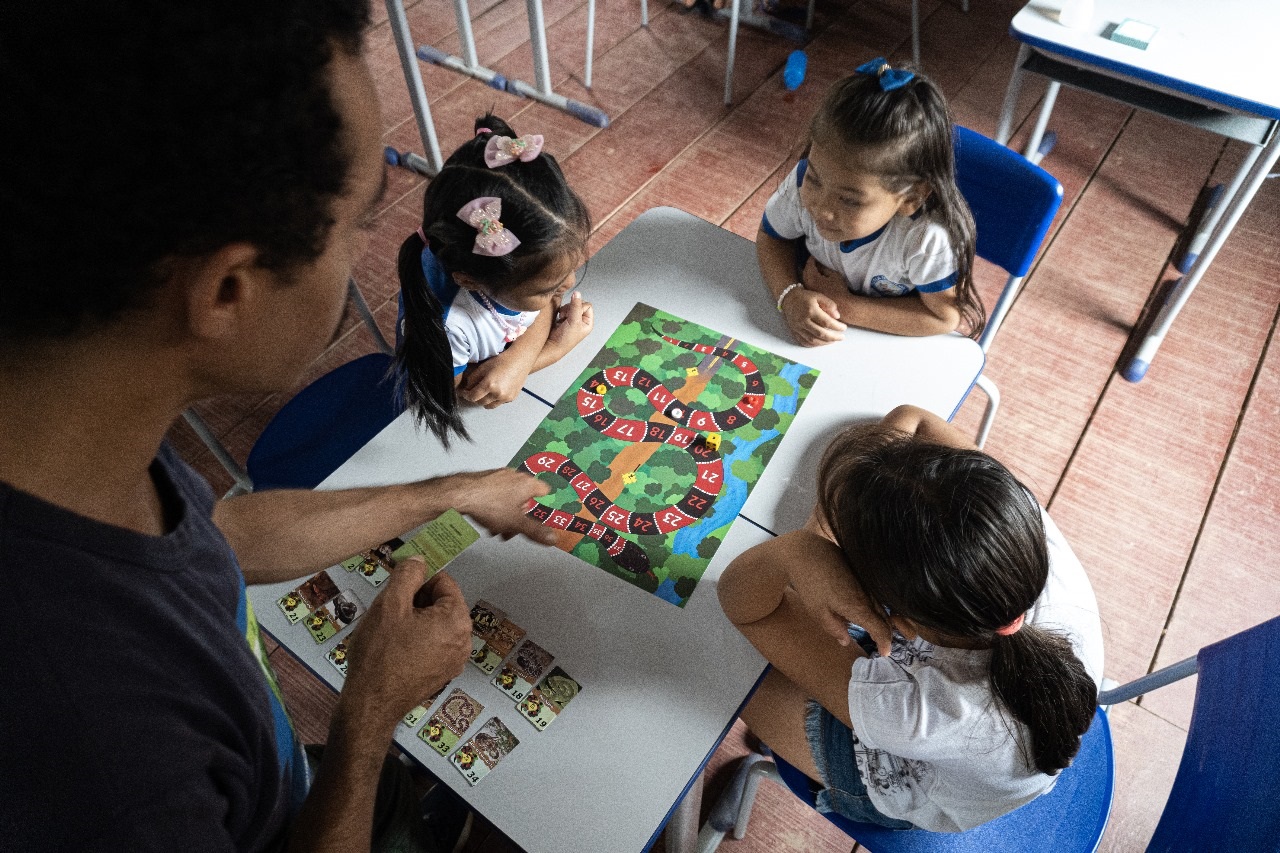Languages
Educational Games on the Biodiversity of Snakes and Fish of the BR-319 Highway
In the first week of April, the launch of the games on the biodiversity of snakes and fish along the BR-319 highway took place, titled "Winding through BR-319" (board game) and "Fish of Amazonian Streams" (memory game). The illustrations in the fish memory game were elaborated by Dr. Lis Stegmann (researcher at Embrapa Eastern Amazon), while the snake board game was conceived by Dr. Rafael de Fraga, researcher at the Vale Technological Institute - ITV, also featuring the participation of Igor Yuri Fernandes, Alessandra de Araújo Rodrigues, William Ernest Magnusson, and Sérgio Santorelli Junior.
The development and production of the educational games received support and funding from the Amazonas State Research Support Foundation - FAPEAM - via Notice No. 004/2023 - Science, Technology, and Innovation Popularization Support Program - POP CT&I. The event was also supported by the Integrated Center for Amazonian Biodiversity Studies - CENBAM, Western Amazon Biodiversity Research Program - PPBio AmOc, PELD PSAM Project - Southwest Amazon PELD, National Institute of Amazonian Research - INPA, Regional Nucleus of PPBio Humaitá, and the Fishery Ichthyology and Management Laboratory of the Madeira River Valley - LIOP/UFAM.
The educational games on the biodiversity of snakes and fish from the BR-319 (Figure 1) were presented to children and young people at the Municipal School Nossa Senhora Aparecida (riverside school) located in the city of Humaitá, in the state of Amazonas. The activities related to the presentation and dynamics using the games involved students, teachers, local community members, and were conducted with the support of LIOP/UFAM scholarship holders.
Figure 1. Educational games of snakes and fish from the BR-319
According to MSc. Mariel de Acácio Lima, LIOP scholarship holder and responsible for the games' application in Humaitá, these actions are of fundamental importance for riverside peoples, who often live in inhospitable places in the Amazon region and do not have much contact with this type of educational action. The children were amazed by the illustrations of local species and had the opportunity to learn about these species that exist right there in the region where they live.
Through this initiative, it is hoped that these children, young people, as well as all those involved in the activities developed in schools, will be aware of the importance of local fauna and engage in the conservation of these ecosystems and promote environmental education actions in their communities.
According to INPA researcher Dr. William Ernest Magnusson, the games were made available in accessible digital format compatible with home printers, so they can be replicated in other locations, and can be downloaded at the links below.
"Winding through BR-319" Game
"Winding through BR-319" (Figure 2) is a board game set in the Humaitá region, covering the BR-319, Madeira and Purus rivers, forest, and traditional communities distributed along the Purus-Madeira interfluve region, which is part of the players' path on the board. The numbered houses are arranged forming a coral snake, along the way players can obtain cards with curiosities about 15 snake species and information about advances and setbacks that vary depending on the location the player is on the board. The species presented in the game are: boa constrictor (Boa constrictor), fer-de-lance (Bothrops atrox), common lancehead (Bothrops bilineatus), bates' pipe snake (Corallus batesii), hortulan corallus (Corallus hortulana), neotropical rattlesnake (Crotalus durissus), bushmaster (Lachesis muta), parrot snake (Leptophis ahaetulla), Urutu pit viper (Micrurus hemprichii), South American coral snake (Micrurus remotus), sharp-nosed snake (Oxybelis aeneus), false coral (Oxyrhopus vanidicus), tiger rat snake (Spilotes pullatus), green anaconda (Eunectes murinus), and aquatic coral snake (Helicops angulatus).
Figure 2. Mariel Acácio teaching students to play the "Winding through BR-319" board game.
"Fish of BR-319 Streams" Memory Game
In the memory game (Figure 3), thirteen species of fish inhabiting Amazonian streams are presented. They are: dalmatian molly (Amazonspinther dalmata), rivulus (Anablepsoides micropus), marbled hatchetfish (Carnegiella strigata), jacunda (Crenicichla inpa), dwarf pike cichlid (Crenuchus spilurus), blue acara (Aequidens tetramerus), coropinae knifefish (Gymnotus coropinae), tetra (Hyphessobrycon copelandi), candiru (Ituglanis amazonicus), threestripe pencilfish (Nannostomus trifasciatus), blackstripe pencilfish (Pyrrhulina semifasciata), twig catfish (Rineloricaria lanceolata), and cardinal tetra (Paracheirodon axelrodi). The game comes with a manual explaining how the memory game works and provides information about each fish species found on the cards. Each card contains two names: the first is the common name, and the second name in parentheses is the scientific name.
Figure 3. Elementary school students playing the "Fish of BR-319 Streams" memory game.
---




